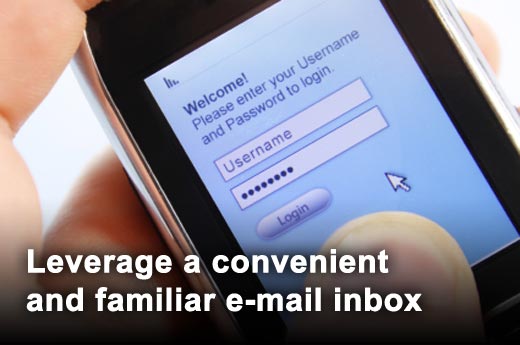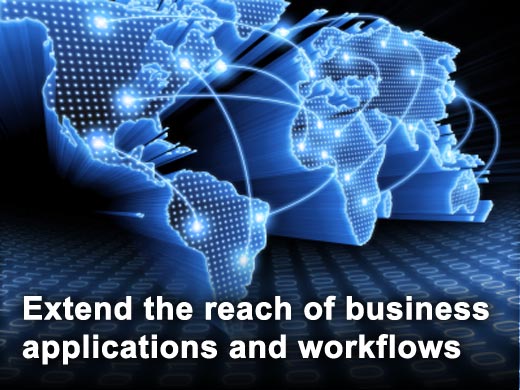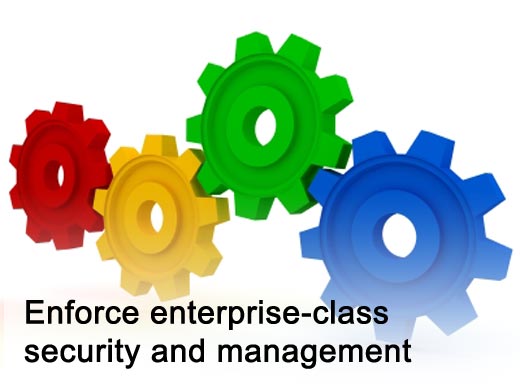
A standard rule of thumb is that any task that involves three or more people takes seven business days to complete. When one of those people is out of the office, that completion timeframe can move closer to 10 days. Mobilizing workflow applications keeps business activities moving forward, potentially decreasing task completion times from seven days to seven minutes.
Mobilizing workflow takes away the hassle of e-mail notifications, searching for Wi-Fi connections, accessing the VPN, then logging into a system to approve. New mobile workflow capabilities eliminate those multiple steps. Recipients need only to open the workflow notification on their smartphone, and all the necessary information is available to approve or decline.
According to Willie Jow, vice president for business operations and mobility product marketing for Sybase, mobilizing internal business processes is a significant first step toward creating a truly mobile environment. This type of mobility leads to business process reengineering that can spread throughout the enterprise and lead to new, long-term strategies.
This slideshow highlights the benefits organizations can gain from mobilizing their workflow applications process.
Click through to view benefits organizations can gain from mobilizing their workflow applications process.
Mobilizing workflow applications keeps business activities moving forward, potentially decreasing task completion times from seven days to seven minutes.
Recipients need only to open the workflow notification on their smartphone, and all the necessary information is available to approve or decline.
Typical workflow processes that should be mobilized are contracts that need customer signatures, expense reports that need approval, and shipment and delivery requests. Instead of printing, filling out and submitting paperwork, the recipient can approve the request on a mobile device while in an airport, at a customer site, and from the workplace.
Mobilizing the approval process so that managers have the request immediately on their smartphones and can approve with a quick touch to the screen can turn what would be missed opportunities into new revenue.
Workflows will extend beyond the internal organization to partners and suppliers. Consider this example: When a production order is complete, the operations team sends a trigger to the shipping department to load the order with the bill of lading (BOL) for the carrier. In a mobile supply chain, the shipping department will receive the notification that the shipment is ready on a smartphone or other mobile device. The shipping department attaches the necessary documentation and sends it to the carrier electronically. Once the carrier picks up the shipment, it notifies the retailer’s warehouse about when the shipment will arrive. All these notifications will be sent electronically to any number of devices that each partner uses.
In the next few years, mobility should extend beyond your organization to your customers, partners, suppliers and any stakeholder in your ecosystem using any device and sending multiple types of electronic notifications.
Security inevitably ranks as a top concern for the mobile enterprise. Enterprises can protect their mobile information workforce by adding remote wipe capabilities or taking a sandbox approach to data stored on a smartphone.
And rather than investing in a single mobile deployment that supports a select group of mobile information workers, enterprises can mobilize the entire enterprise by deploying a mobile enterprise platform. A mobile enterprise platform allows IT to mobilize multiple business applications and leverage existing resources.










